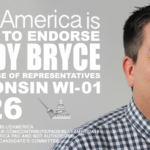I know I said I was going to post some really cheesy films on Saturday night's, but when I saw this on Youtube, I couldn't resist. At least the intro to the above video is very cheesy, so there's that. This film also made C&L's Top 26-50 all time horror movies.
Black Sunday (Italian: La maschera del demonio; also known as The Mask of Satan and Revenge of the Vampire) is a 1960 Italian gothic horror film directed by Mario Bava, from a screenplay by Ennio de Concini, Mario Serandrei and Marcello Coscia (who was uncredited). The film stars Barbara Steele, John Richardson, Arturo Dominici and Ivo Garrani. It was Bava's directorial debut, although he had completed several previous feature films without credit. Based very loosely on Nikolai Gogol's short story "Viy", the narrative concerns a witch who is put to death by her own brother, only to return 200 years later to seek revenge on her descendants.
In 2004, one of its sequences was voted number 40 among the "100 Scariest Movie Moments" by the Bravo TV network.[1]
Bava’s first project as a credited director gives the viewer an early look at the hyper-stylized, highly Expressionistic lighting and set design Bava would later become famous for. It also set the trend for Bava’s general focus on horror and suspense. His camera work is restless, panning and zooming like an anxious, panicked observer of the morbid events that unfold after Asa is accidentally awakened. Though the plot feels a lot like a loose adaptation of Dracula, Bava actually used Nikolai Gogol’s story “Viy” as his chief inspiration.
Full of images that were considered very shocking for 1960, such as the iron mask being nailed to Asa’s face during the opening scene, and the incredible moment when the mask is removed two-hundred years later to reveal a pale, eyeless face pregnant with scorpions, Black Sunday is probably most remarkable for cinematography that rivals Hitchcock’s Psycho from the same year, as well as a baroque manipulation of form and shadow that borders on the abstract.
















